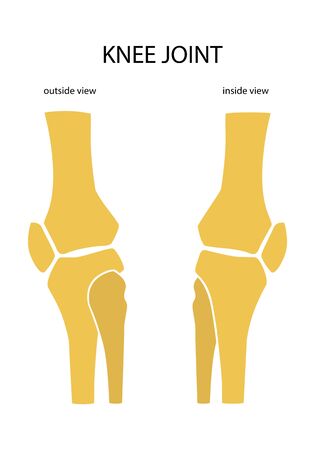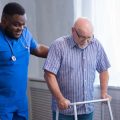Understanding Orthopedic Fractures and Initial Care
What Are Orthopedic Fractures?
An orthopedic fracture is simply a broken bone. Bones can break in many different ways, like cracking, splitting, or shattering into several pieces. Fractures can happen due to falls, sports injuries, car accidents, or even because of weakened bones from medical conditions such as osteoporosis.
Common Types of Bone Fractures
| Type of Fracture | Description | Example Situation |
|---|---|---|
| Simple (Closed) | Bone breaks but does not pierce the skin | Slip and fall at home |
| Compound (Open) | Bone breaks and pierces through the skin | Car accident with severe leg injury |
| Comminuted | Bone shatters into three or more pieces | High-impact trauma like a sports injury |
| Greenstick | Bones bend and crack instead of breaking completely (common in kids) | Child falls off playground equipment |
| Stress Fracture | Tiny cracks in the bone from overuse | Long-distance running or repetitive motion activities |
How Are Fractures Diagnosed?
If you suspect a fracture, it’s important to seek medical attention right away. In a typical U.S. hospital or urgent care clinic, here’s what you can expect:
- Physical Exam: The doctor will look at the injured area for swelling, bruising, and deformity.
- X-rays: This is the most common imaging test to see if and where the bone is broken.
- MRI or CT scans: Sometimes used for complex fractures or when X-rays don’t show enough detail.
- Medical History: You’ll be asked how the injury happened and about any previous bone problems.
The First Steps in Hospital Care for a Fracture
The first few hours after a fracture are crucial for proper healing and pain control. Here’s what usually happens in a U.S. hospital:
| Step | Description | What Patients & Families Can Expect |
|---|---|---|
| Pain Management | Pain relief using medication (oral, IV, or injection) | Nurse will ask about pain level; medicine given as needed |
| Splinting/Casting | Limb is stabilized with a splint or cast to keep the bones in place while swelling goes down or until surgery is planned if needed | A temporary splint may be used first; casting usually comes later when swelling decreases |
| Surgery (if necessary) | If the fracture is severe or displaced, surgery may be needed to realign and stabilize the bone with metal rods, plates, or screws | The surgeon will explain risks and benefits; consent forms are signed before surgery proceeds |
| X-ray Follow-Up | X-rays are often repeated after treatment to ensure proper alignment of the bone(s) | You may be moved between rooms for these checks; staff will help with transfers if mobility is limited |
The Role of Families in Early Recovery
Families play an important role during this stage. They help gather health information for doctors, provide comfort and support to patients, and ask questions about next steps. It’s normal to feel anxious in the hospital setting—don’t hesitate to request updates from your healthcare team.
The initial care period sets the foundation for successful rehabilitation. Understanding what happens right after a fracture helps everyone know what to expect before moving forward with recovery at home.
2. The Hospital Stay: Treatment and Early Rehabilitation
Standard Inpatient Treatments for Fractures
When you first arrive at the hospital with a fracture, the medical team will quickly assess your injury. Depending on the type and severity of your fracture, doctors may recommend different treatments to ensure proper healing. Here’s an overview of the most common inpatient treatments:
| Treatment | Description | When It’s Used |
|---|---|---|
| Surgery | Physicians realign broken bones and secure them with metal plates, screws, or rods inside the body. | Complex or unstable fractures that cannot heal properly on their own. |
| Casting | A hard plaster or fiberglass shell is applied to immobilize the injured area. | Simple fractures where bones are well-aligned after reduction. |
| Splinting/Bracing | A removable device keeps the bone stable while allowing for some movement. | Less severe fractures or as a temporary measure before casting or surgery. |
The Importance of Immobilization
Immobilization is critical in the early phase of fracture recovery. Keeping the bone stable helps reduce pain, prevent further injury, and allows the bone to start healing in the correct position. During this period, your healthcare team will monitor swelling, circulation, and nerve function to avoid complications.
The Role of Physical Therapy (PT) and Occupational Therapy (OT)
Rehabilitation often begins soon after treatment starts—even while you’re still in the hospital. Early rehab focuses on gentle movements and activities that help prevent stiffness, muscle loss, and other issues that can develop during immobilization.
Physical Therapy (PT)
- Early Movement: PTs may guide you through safe range-of-motion exercises for nearby joints to keep them flexible.
- Pain Management: Therapists use techniques like ice, elevation, and gentle massage to control swelling and discomfort.
- Mobility Training: If needed, PTs teach you how to use crutches, walkers, or other devices so you can move safely without putting weight on your injured limb.
Occupational Therapy (OT)
- Daily Activities: OTs help you adapt self-care routines such as bathing, dressing, and eating while your movement is limited.
- Home Preparation: They suggest modifications or equipment for your home to ensure safety once you’re discharged—like grab bars in the bathroom or tools for one-handed tasks.
- Coping Strategies: OTs provide tips for managing frustration and staying independent during recovery.
Your Care Team: Working Together for Recovery
Your orthopedic surgeon, nurses, physical therapists, and occupational therapists all work together to make sure your treatment plan fits your needs. Frequent check-ins allow adjustments based on how you’re healing. Good communication with your care team ensures you understand each step of your recovery from day one in the hospital onward.

3. Transitioning from Hospital to Home
Discharge Planning: Setting Up for Success
Leaving the hospital after a fracture can feel overwhelming, but with proper planning, your recovery at home can be smooth and safe. Discharge planning starts while you’re still in the hospital. The healthcare team—doctors, nurses, social workers, and physical therapists—will work together to make sure you have everything you need for a successful transition.
Key Steps in Discharge Planning
| Step | Description |
|---|---|
| Medication Management | Review prescriptions and pain management plans with your nurse or pharmacist. |
| Therapy Instructions | Receive clear instructions on exercises or movement restrictions from your physical therapist. |
| Follow-Up Appointments | Schedule visits with your orthopedic doctor and therapy team. |
| Home Health Services | If needed, arrange for visiting nurses or therapists to help at home. |
Adapting Your Home Environment for Safety and Comfort
Your home may need some adjustments to make daily life easier and safer during recovery. Simple changes can help prevent falls and promote independence while you heal.
Tips for Adapting the Home Environment
- Remove loose rugs and clutter from walkways to avoid tripping hazards.
- Install grab bars in the bathroom, especially near the toilet and shower.
- Use a shower chair or non-slip mat in the bathtub.
- Keep frequently used items within easy reach to reduce bending or stretching.
- If you have stairs, consider arranging a temporary bedroom on the ground floor.
- Add nightlights in hallways and bathrooms for better visibility at night.
Coordinating with Insurance and Home Health Services
Navigating insurance coverage and finding the right services can feel tricky. Most insurance plans—including Medicare and private insurers—cover certain home health services after a hospital stay, such as physical therapy or skilled nursing care. Ask your hospital’s case manager or social worker to help you:
- Verify which services are covered by your insurance plan.
- Select approved agencies for home health visits.
- Understand any co-pays or paperwork requirements.
- Set up equipment rentals (like walkers or wheelchairs) if needed.
Preparing Caregivers for Their New Role
A family member or close friend may become your primary caregiver during recovery. It’s important they understand what to expect and how best to support you. The hospital team can provide hands-on training before discharge. Here are key areas caregivers should focus on:
| Caregiver Task | Details & Resources |
|---|---|
| Medication Assistance | Learn how and when to give medications safely. |
| Mobility Support | Practice helping with walking aids and safe transfers between bed, chair, or bathroom. |
| Exercise Supervision | Know how to assist with prescribed exercises without causing injury. |
| Emergency Preparedness | Recognize signs of complications (e.g., increased pain, swelling, fever) and know whom to call for help. |
Caring Together Makes Recovery Smoother
No one expects you—or your caregiver—to manage everything alone. Stay connected with your rehab team, communicate openly about challenges, and don’t hesitate to ask questions along the way. With good planning and teamwork, transitioning from hospital to home becomes a positive step toward full recovery.
4. Outpatient Rehabilitation and Long-term Recovery
Transitioning from Hospital to Home-Based Care
After you leave the hospital, your journey to recovery continues with outpatient rehabilitation. This stage focuses on helping you regain strength, flexibility, and independence in your daily life. In the United States, it’s common for orthopedic patients to attend physical therapy (PT) and occupational therapy (OT) sessions at a local clinic or sometimes even at home through home health services.
Physical Therapy: Regaining Mobility
Your physical therapist will design a personalized exercise program based on your specific fracture and healing progress. The goal is to restore mobility, improve balance, and rebuild muscle strength. Here are some typical activities you might do:
| Exercise Type | Purpose | Frequency |
|---|---|---|
| Range-of-motion exercises | Prevent joint stiffness | Daily |
| Strength training | Rebuild muscle around the injured area | 2-3 times per week |
| Balance training | Reduce fall risk | 2-3 times per week |
| Walking/gait training | Improve walking ability with or without assistive devices | As recommended by therapist |
Occupational Therapy: Returning to Daily Activities
If your fracture affects your ability to perform daily tasks—like dressing, bathing, cooking, or returning to work—occupational therapists can help. They teach practical strategies and may suggest adaptive equipment so you can stay independent while you heal.
- Adaptive tools: Items like reachers, sock aids, or shower benches make daily life easier.
- Home safety tips: Removing tripping hazards and installing grab bars reduce your risk of falls.
- Pacing and energy conservation: Learning how to do tasks efficiently helps prevent fatigue and setbacks.
Pain Management During Recovery
Pain is a normal part of the healing process but should be manageable. Your healthcare team may suggest a combination of:
- Medication: Over-the-counter pain relievers or prescription medications as needed.
- Ice/heat therapy: Reduces swelling and eases discomfort.
- Mild activity: Gentle movement prevents stiffness without overloading the injury.
- Mental health support: Counseling or support groups can help manage stress and frustration during recovery.
Coping with Setbacks: What to Do If Progress Slows Down?
If you notice increased pain, swelling, or difficulty moving the affected limb, it’s important to communicate with your care team right away. In American rehab culture, open communication is encouraged—your therapist will adjust your plan as needed to keep you safe and on track toward recovery.
Your Roadmap to Independence: Setting Realistic Goals
Your therapists will help you set weekly or monthly goals that are meaningful for you—whether that’s walking without crutches, driving again, or returning to work. Celebrate each small victory! Remember that everyone heals at their own pace, and long-term recovery is about steady progress rather than perfection.
5. Preventing Future Injuries and Supporting Overall Wellness
Why Prevention Matters After a Fracture
Recovering from a fracture is an important milestone, but it’s just as essential to focus on preventing future injuries. Taking steps now helps you stay active and independent, reduces the risk of another fracture, and supports your overall wellness for the long term.
Fall Prevention: Making Your Home Safer
Falls are one of the leading causes of fractures, especially among older adults. Simple changes at home can greatly reduce your risk:
| Area | What to Check | How to Fix It |
|---|---|---|
| Floors | Loose rugs or clutter | Remove tripping hazards; use non-slip mats |
| Lighting | Dark hallways or stairs | Add night lights; replace dim bulbs with brighter ones |
| Bathroom | Slippery surfaces | Install grab bars and non-slip mats in tub/shower |
| Stairs | No handrails or uneven steps | Add sturdy handrails; repair broken steps |
Tip:
If you use a cane or walker, make sure it’s the right height and in good condition.
Building Stronger Bones: Focus on Bone Health
Your bones need care to stay strong and heal well after a fracture. Here are key strategies:
- Nutrition: Eat foods rich in calcium (like dairy, leafy greens, or fortified alternatives) and vitamin D (from sunlight, fish, or supplements).
- Exercise: Weight-bearing activities like walking or gentle resistance training can help build bone strength. Always check with your doctor or physical therapist before starting new exercises.
- Avoid Smoking & Excessive Alcohol: Both can weaken your bones and slow healing.
Lifestyle Changes for Long-Term Wellness
Your daily habits play a big part in recovery and prevention. Consider these healthy choices:
- Stay Active: Even after formal rehab ends, keep moving! Regular activity boosts balance, flexibility, and strength.
- Meds Management: Take all prescribed medicines for bone health as directed by your healthcare team.
- Shoes Matter: Wear well-fitting shoes with good grip—avoid flip-flops or slippers that may cause slips.
- Mental Health: Recovering from injury can be tough emotionally. Talk openly with friends, family, or a counselor if you’re feeling down or anxious.
Community Resources & Ongoing Support
You’re not alone on this journey! Many communities offer resources to help you stay safe and active:
| Resource Type | Description/Examples |
|---|---|
| Seniors Centers & YMCAs | Exercise classes tailored for all ages and abilities; social support groups |
| Your Healthcare Team | Nurses, therapists, and doctors offer follow-up care, advice, and screenings |
| Home Safety Services | Professionals who can assess your home for fall risks and recommend improvements |
| Online Support Groups | Connect with others recovering from fractures for tips and encouragement |
If You Need Help…
If you’re unsure where to start, ask your doctor or physical therapist about local programs or community partners. Staying connected makes a big difference!


